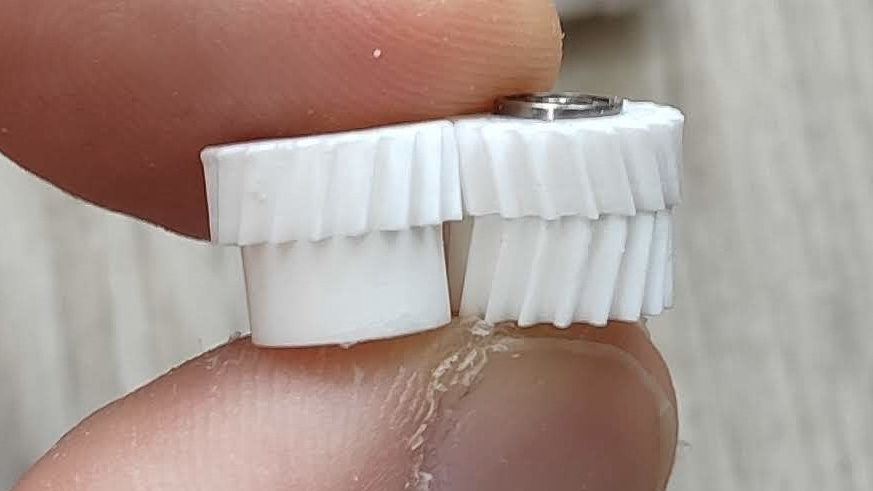A DIY non-contact digital tachometer for machinists

A tachometer is a device that counts the revolutions of a rotating object, the best-known example being the automotive tachometer that monitors the revolutions per minute (RPM) of an internal combustion engine. But tachometers are useful, and sometimes indispensable, in many other applications. The RPM is a very important data when working with machine tools like lathes and milling machines, this is what this non-contact digital tachometer has been designed to adapt to.
The term "feeds and speeds" refers to the settings a machinist uses to achieve the ideal tool load. The end mill of a vertical milling machine, for example, can only remove a certain amount of material with each stroke of each cutter flute. For this reason, it is imperative that a machinist know how fast the end mill is turning. Most modern machine tools (not just CNC tools, but also hand tools) include a digital RPM display. But many older machines and some modern machines with low cost VFDs (variable frequency drives) do not, making it very difficult to maintain an optimal load. This DIY device fills those gaps in an affordable way.

Inside the 3D printed case of the device are an Arduino Nano board, an infrared distance sensor module, a 0.91" 128x32 OLED display, a lithium- ion and a TP4056 lithium battery charging module.Every time the infrared sensor sees a strong reflection of its emitted light, it counts a pulse.But by timing the delay between pulses, the Arduino can calculate the RPM and then display this number on the OLED display.The user only needs to mount the device in front of the object to be monitored, such as a milling machine spindle or lathe chuck, and place a piece of white tape of 6 mm wide in front of the infrared sensor. Each time the white ribbon passes in front of the sensor, it reflects a lot of light which the sensor detects as a pulse.
It does not require any physical modification to the machine tool, as it is battery operated and does not need to come into physical contact with the spindle, so it is perfect for machinists working on machine tool equipment. An employer.


A tachometer is a device that counts the revolutions of a rotating object, the best-known example being the automotive tachometer that monitors the revolutions per minute (RPM) of an internal combustion engine. But tachometers are useful, and sometimes indispensable, in many other applications. The RPM is a very important data when working with machine tools like lathes and milling machines, this is what this non-contact digital tachometer has been designed to adapt to.
The term "feeds and speeds" refers to the settings a machinist uses to achieve the ideal tool load. The end mill of a vertical milling machine, for example, can only remove a certain amount of material with each stroke of each cutter flute. For this reason, it is imperative that a machinist know how fast the end mill is turning. Most modern machine tools (not just CNC tools, but also hand tools) include a digital RPM display. But many older machines and some modern machines with low cost VFDs (variable frequency drives) do not, making it very difficult to maintain an optimal load. This DIY device fills those gaps in an affordable way.

Inside the 3D printed case of the device are an Arduino Nano board, an infrared distance sensor module, a 0.91" 128x32 OLED display, a lithium- ion and a TP4056 lithium battery charging module.Every time the infrared sensor sees a strong reflection of its emitted light, it counts a pulse.But by timing the delay between pulses, the Arduino can calculate the RPM and then display this number on the OLED display.The user only needs to mount the device in front of the object to be monitored, such as a milling machine spindle or lathe chuck, and place a piece of white tape of 6 mm wide in front of the infrared sensor. Each time the white ribbon passes in front of the sensor, it reflects a lot of light which the sensor detects as a pulse.
It does not require any physical modification to the machine tool, as it is battery operated and does not need to come into physical contact with the spindle, so it is perfect for machinists working on machine tool equipment. An employer.
What's Your Reaction?














![Three of ID's top PR executives quit ad firm Powerhouse [EXCLUSIVE]](https://variety.com/wp-content/uploads/2023/02/ID-PR-Logo.jpg?#)







